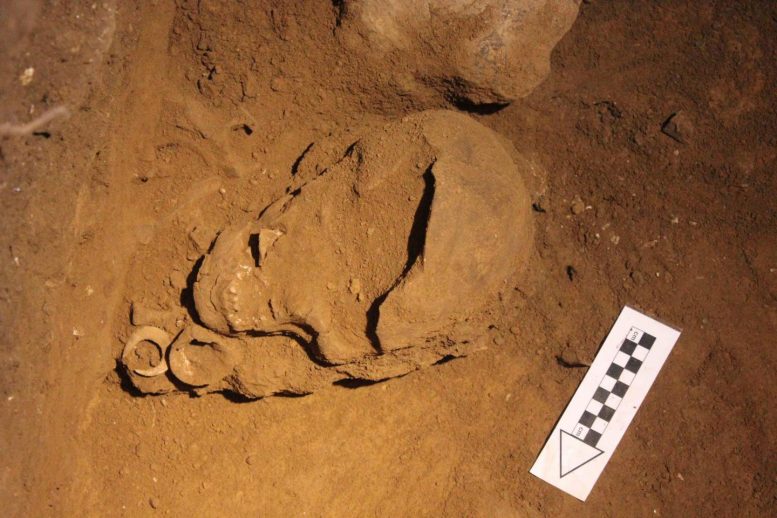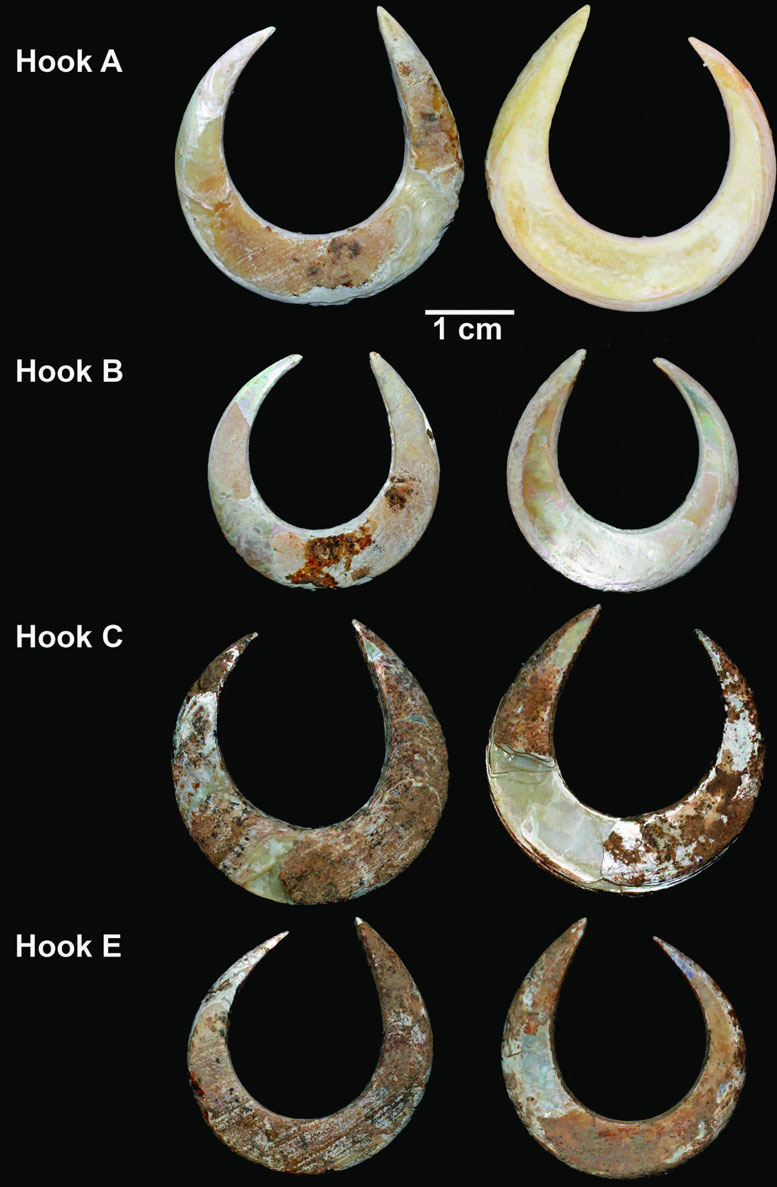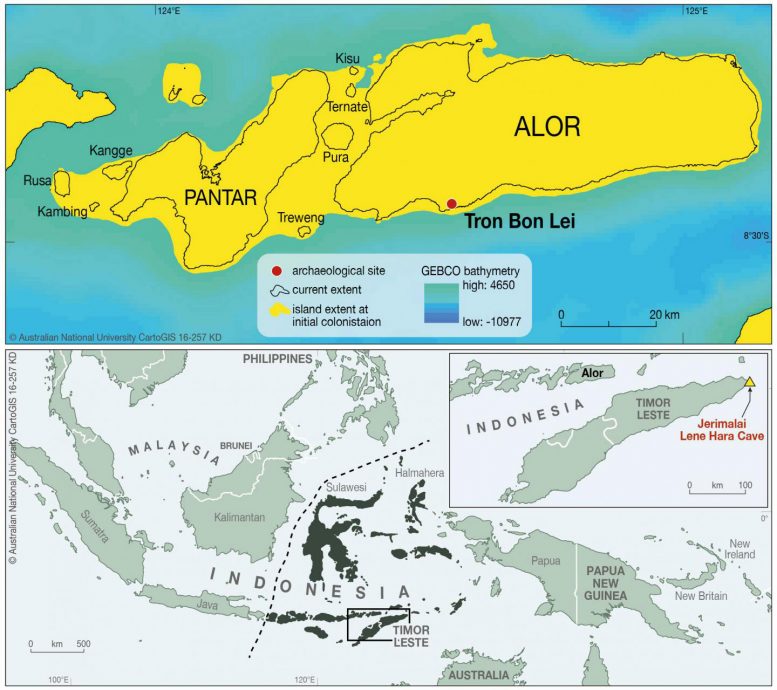An archaeologist from The Australian National University (ANU) has uncovered the world’s oldest known fish-hooks placed in a burial ritual, found on Indonesia’s Alor Island, northwest of East Timor.
The five fish hooks were among items carefully placed under the chin, and around the jaws of a female from the Pleistocene era, dating back 12,000 years.
Distinguished Professor Sue O’Connor from the School of Culture, History and Language in the ANU College of Asia and the Pacific said the discovery turns on its head the theory that most fishing activities on these islands were carried out by men.
“These are the oldest known fish-hooks associated with mortuary practices from anywhere in the world and perhaps indicate that fishing equipment was viewed as essential for the transition to the afterlife in this area,” Professor O’Connor said.
“The discovery shows that in both life and death, the Pleistocene inhabitants of the Alor Island region were intrinsically connected to the sea, and the association of the fish-hooks with a burial denotes the cosmological status of fishing in this island environment.”
Prior to the find, the earliest fish-hooks associated with a burial site date back only about 9,000 years and were found in a river environment of the Mesolithic era in Siberia, known as the Ershi cemetery.
Professor O’Connor said in a maritime context, the earliest burials with fish-hooks are from Oman, where rotating fish-hooks made of pearl shell have been dated to about 6,000 years ago.
Older fish hooks from Japan, Europe and East Timor date back as far as 22,000 years, but they were not related to burial rites.
In the Alor Island find, two different types of fish-hooks were buried – a J-Shaped hook and four circular rotating hooks fashioned from the shell of a species of sea-snail.
Professor O’Connor said the appearance of the Alor rotating fish-hooks so early on a disconnected island suggests that several fishing communities developed the same technology separately, rather than learning from each other through contact.
“The Alor hooks bear an uncanny resemblance to rotating hooks used in Japan, Australia, Arabia, California, Chile, Mexico and Oceania,” she said.
“We argue that the same sort of artifact was developed independently because it was the most fitting form to suit the ecology, rather than through cultural diffusion.”
Reference: “Fishing in life and death: Pleistocene fish-hooks from a burial context on Alor Island, Indonesia” by Sue O’Connor, Mahirta, Sofía C. Samper Carro, Stuart Hawkins, Shimona Kealy, Julien Louys and Rachel Wood, 6 December 2017, Antiquity.
DOI: 10.15184/aqy.2017.186












How would a line be attached to these hooks?
Could they be piercing jewellery?
Hi,
Great articles, love this mag but… This one article made me laugh and so did all my female collagues. The article is about the Worlds oldest fishhook https://scitechdaily.com/archaeologists-discover-oldest-known-funereal-fish-hooks/
This has to be one of the dumbest thibgs I’ve read in a long time. Try practicly to use those as hooks and the fish will fall of.
It is a neclase, the same kind of design is still used and we all say the same thing, it’s a piece of jewellry.